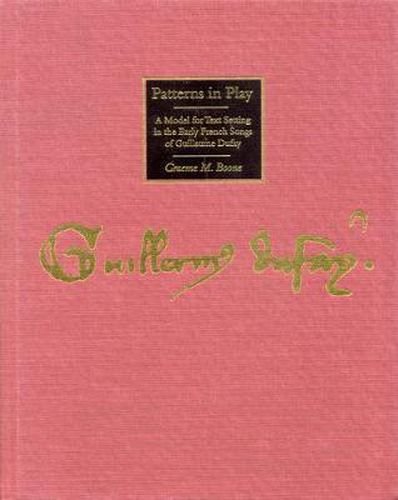Readings Newsletter
Become a Readings Member to make your shopping experience even easier.
Sign in or sign up for free!
You’re not far away from qualifying for FREE standard shipping within Australia
You’ve qualified for FREE standard shipping within Australia
The cart is loading…






The relationship between text and music is a central issue in fifteenth-century music studies. Decades of research and performance have failed to provide clear answers to the most basic questions, such as which notes go with which syllables and why. Patterns in Play focuses on the early French songs of Guillaume Dufay and proposes a basis for determining some rules of common procedure for interpreting both underlay and style. Graeme M. Boone examines questions of rhythm and declamation, considering mensuration, linguistic and poetic prosody, and prosody in song. The first three chapters comprise a set of discussions preliminary to close rhythmic analysis of Dufay’s texted song melodies. Beginning with mensural rhythm and proceeding to poetics and the relationship between Dufay’s poetic and musical rhythms and musical declamation, Boone examines the musical features of rhythm, melody, tonal organization, counterpoint, text setting, and text expression. Offering fresh insight into the issues he raises, Boone clarifies the relationship between underlay and style and provides a better understanding of the technical and aesthetic issues that Dufay and other composers faced in weaving their patterns of song.
$9.00 standard shipping within Australia
FREE standard shipping within Australia for orders over $100.00
Express & International shipping calculated at checkout
The relationship between text and music is a central issue in fifteenth-century music studies. Decades of research and performance have failed to provide clear answers to the most basic questions, such as which notes go with which syllables and why. Patterns in Play focuses on the early French songs of Guillaume Dufay and proposes a basis for determining some rules of common procedure for interpreting both underlay and style. Graeme M. Boone examines questions of rhythm and declamation, considering mensuration, linguistic and poetic prosody, and prosody in song. The first three chapters comprise a set of discussions preliminary to close rhythmic analysis of Dufay’s texted song melodies. Beginning with mensural rhythm and proceeding to poetics and the relationship between Dufay’s poetic and musical rhythms and musical declamation, Boone examines the musical features of rhythm, melody, tonal organization, counterpoint, text setting, and text expression. Offering fresh insight into the issues he raises, Boone clarifies the relationship between underlay and style and provides a better understanding of the technical and aesthetic issues that Dufay and other composers faced in weaving their patterns of song.